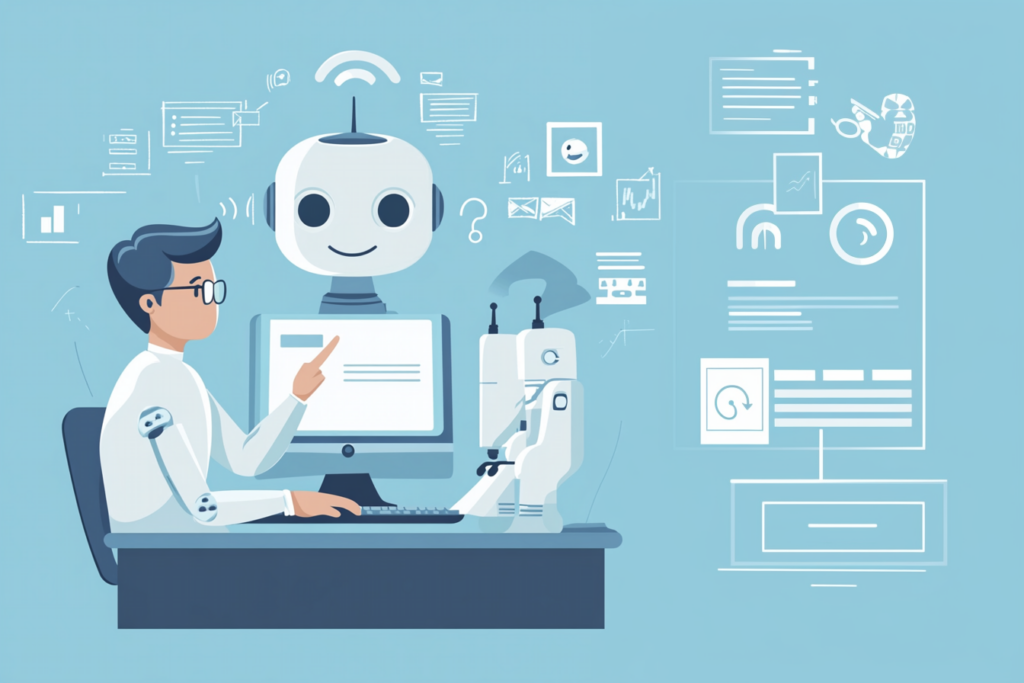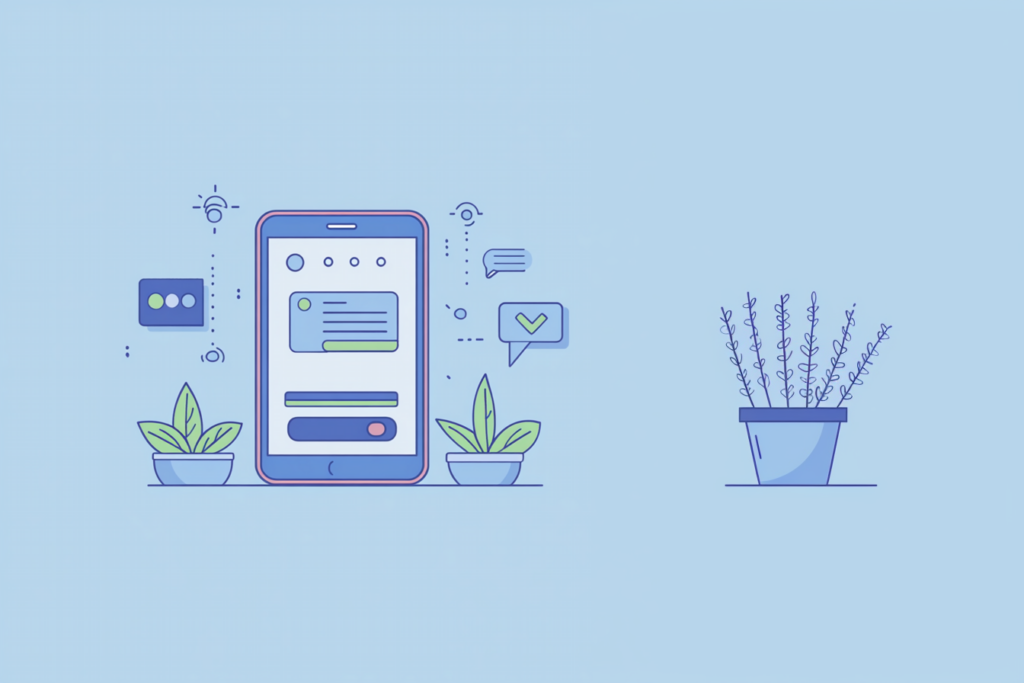Imagine reaching out to a company for support, and instead of waiting endlessly for a response, you get instant help. Not from a human but from a conversational AI that understands your query, speaks your language, and provides solutions with surprising precision. This is called conversational AI technology. It’s transforming the way businesses interact with customers, automating interactions while keeping them personal and engaging.
According to a recent report, modern chatbots can now successfully handle entire conversations with customers over 69% of the time. With conversational AI integration, businesses are seeing more natural and helpful interactions, making AI chatbots a popular choice for customer support, sales, and more.
It’s no wonder industries from retail to healthcare are adopting conversational AI models to enhance customer support, improve user engagement, and save operational costs. But how exactly does one build such an intelligent chatbot?
This guide will take you through each step of building conversational AI, from planning and designing to deployment and maintenance.
What is Conversational AI?
Conversational AI is an advanced form of artificial intelligence that powers intelligent chatbots, allowing them to simulate human conversation more naturally. Unlike traditional chatbots, which follow scripted responses, conversational AI can interpret user intent, understand language complexities, and even learn from past interactions to improve over time.

This technology uses complex models, including natural language processing (NLP) and machine learning, to understand and generate human-like responses. But how conversational AI works goes beyond just answering questions; it adapts to user needs, delivering personalized experiences.
Conversational AI integration enables seamless communication across platforms, making it adaptable to various applications, from customer support to sales and beyond.
For businesses, conversational AI models offer a unique advantage: they don’t just interact; they build relationships, learning from each conversation to provide increasingly valuable insights.
How to Build a Conversational AI?
Building a conversational AI involves several steps, each crucial for creating an intelligent chatbot that doesn’t just answer questions but genuinely understands and engages with users.
Let’s explore these steps in detail.
Planning Your Chatbot Project
Before you jump into development, it’s essential to lay the groundwork. Planning ensures your project aligns with business objectives and meets user expectations. Here’s where you begin:
-
Identifying Objectives: What purpose will your chatbot serve? Defining clear goals will shape the design and features (whether for customer support, lead generation, or internal communication).
-
Understanding Your Audience: Knowing your target audience is vital. What are their common questions, pain points, and communication preferences? Tailor the chatbot’s tone and responses to meet their expectations.
-
Selecting Platforms and Channels: Decide where your chatbot will interact with users—website, social media, or mobile app? Each platform requires specific design adjustments for optimal user experience.
-
Setting Success Metrics: Identify KPIs, like user satisfaction, engagement rates, and resolution times, to track your chatbot’s performance and areas for improvement.
Designing the Conversation Flow
A well-designed conversation flow ensures that users have a smooth experience with your chatbot. Let’s break down the critical aspects:
-
User Experience (UX) Design in Chatbots: Like any digital product, user experience is paramount. A chatbot’s interface should be intuitive, guiding users effortlessly from one response to the next. Check out this guide on designing superior AI models for more insights on optimizing UX.
-
Creating a Chatbot Persona: Give your chatbot a personality! Whether formal or friendly, a consistent tone helps users feel more connected. Your chatbot persona should match your brand’s voice.
-
Mapping Conversation Paths: Structure conversations based on user intent. Outline multiple paths the conversation could take, ensuring each ends with a helpful response or a clear next step.
-
Handling Errors and Exceptions: Even the best chatbots need to handle errors gracefully. If the AI doesn’t understand a query, respond politely and suggest alternative phrasing or transfer to a human agent.
-
Supporting Multiple Languages: If your users are international, support for multiple languages can drastically improve user satisfaction.

Choosing the Right Technologies and Tools
Selecting the right tools and platforms can make or break your chatbot project. Here’s what to consider:
-
Platform Selection: Do you need a cloud-based solution, or would on-premises work better for data security? Think about long-term scalability when choosing your platform.
-
Build vs. Buy: Should you build from scratch or leverage existing frameworks? Explore how to create AI assistants here to understand the pros and cons.
-
AI and ML Frameworks: Consider popular frameworks like TensorFlow or PyTorch. These support deep learning conversational AI capabilities, enhancing your chatbot’s intelligence.
-
Integration Capabilities: Ensure your chatbot can seamlessly integrate with CRM systems, customer support platforms, and other tools to deliver a unified experience.
-
Deep Learning Conversational AI: Leveraging deep learning models enables your chatbot to handle complex conversations and deliver human-like responses, which is essential for today’s demanding users.
-
Conversational AI Design and Deployment: Finally, consider how to deploy conversational AI. Cloud-based or on-premise? Each has benefits, depending on your operational needs and budget.
Developing the Chatbot
Once you’ve planned and chosen the technology, it’s time to start building.
-
Setting Up the Development Environment: Choose the right IDEs, libraries, and frameworks. Whether you’re using open-source or licensed tools, ensure the environment is optimized for fast, efficient development.
-
Implementing Natural Language Understanding (NLU): NLU is the backbone of any conversational AI. It enables your chatbot to interpret user intent accurately. Learn how to build AI chatbots with advanced NLU here.
-
Dialog Management Strategies: Effective dialog management guides conversations logically. Use state-of-the-art techniques to manage user inputs, transitions, and follow-ups.
-
Backend Integration: Connect your chatbot with backend systems like customer databases, inventory, and payment processors to provide real-time, actionable responses.
-
Enhancing with AI Features: Incorporate features like sentiment analysis, voice recognition, or image processing, depending on your chatbot’s use case. AI can take user experience to a new level.
Testing and Iteration
Testing is mandatory for a robust conversational AI. Here’s how to refine your chatbot:
-
Creating a Test Plan: Define your testing scope—functionality, user experience, and performance. A structured test plan ensures thorough coverage.
-
Types of Testing: Run both unit tests (for specific features) and end-to-end tests (for entire conversations) to ensure the chatbot operates smoothly.
-
User Feedback Loops: User feedback is invaluable. Allow users to rate their experience. Then, use this data to improve.
-
Continuous Integration/Continuous Deployment (CI/CD): Implement CI/CD pipelines to automate testing and deployment, speeding up your development process.
Deployment and Integration
Your chatbot has been built and tested—now, it’s time to launch it in the real world.
1. Deployment Strategies: When it comes to deploying a conversational AI chatbot, choosing the right approach is essential. Businesses can decide between cloud-based deployment and on-premise deployment. Each option has unique advantages. Cloud-based solutions are popular because they are easier to scale up or down as needed.
If your user base suddenly grows, the cloud can handle the extra demand without any significant changes to infrastructure. This flexibility makes it an attractive option, especially for businesses with varying workloads or smaller IT teams.

On the other hand, on-premise deployment provides much greater control over data storage and security. For businesses that handle sensitive data or have strict data privacy needs, on-premise might be the better choice. It allows companies to store data locally, maintaining full control over access and management.
However, the drawback is that on-premise systems require regular maintenance and upgrades, often needing dedicated IT staff. Both cloud and on-premise solutions offer benefits, so the right choice depends on your business’s unique needs and resources.
2. Integration with Omnichannel Platforms: Customers expect to interact with brands across multiple platforms—your website, social media, or mobile app. Omnichannel integration is key to meeting these expectations. When you integrate your chatbot across all your channels, users can enjoy a seamless experience.
For example, a user might begin a conversation with your chatbot on social media and then continue it on your website without needing to repeat their questions. This approach not only makes the interaction smoother but also builds trust and engagement with your users.
3. Security and Compliance: Security is critical for conversational AI, especially as it collects and processes personal data. Your chatbot must comply with data protection regulations such as GDPR in Europe or CCPA in California.
Failure to comply with these regulations can lead to hefty fines and damage your brand’s reputation. Strong data encryption and secure communication protocols ensure that data stays safe. Regular audits and updates to your security practices are essential to keep up with changing regulations.
4. Scalability Considerations: As your user base grows, your chatbot infrastructure must keep pace. Scalability is crucial for handling higher volumes of interactions without compromising performance. Cloud-based solutions are especially recommended for this, as they allow you to scale resources quickly and efficiently.
When your chatbot system is set up to scale, you can maintain a high level of service, no matter how fast your user numbers increase. Scalability not only improves user experience but also helps your business grow smoothly, keeping customer satisfaction high.
Monitoring and Maintenance
A successful conversational AI requires ongoing maintenance. Here’s what to focus on:
1. Analytics and Monitoring Tools: To build a conversational AI that truly meets user needs, you must understand how it performs in real interactions. Monitoring tools help you track each interaction and spot patterns, popular queries, and even issues. For instance, if many users ask the same question, it signals a common concern or area of interest. Monitoring also reveals where your chatbot might be falling short.
By identifying these gaps, you can make targeted improvements. With insights from analytics, you’re not just fixing problems—you’re actively enhancing the user experience. Today, the best conversational AI platforms offer integrated analytics, making it easy to get these insights and apply them to create a better chatbot.
2. Conversation Analysis: Conversation analysis goes deeper than general analytics, helping you understand user behavior and preferences. It’s about how people use your conversational AI chatbot solution. Are they asking questions directly, or do they expect the chatbot to guide them? Analyzing this data allows you to better adjust responses to match user preferences.
For instance, if users tend to look for personalized recommendations, you can tweak the chatbot to provide those insights automatically. This analysis allows you to create a more tailored experience that feels less like a machine and more like a helpful assistant.
3. Ongoing Training: A conversational AI chatbot isn’t something you build once and leave alone. Regular training is needed to keep up with new trends, queries, and language patterns. Frequently updating your AI models allows your chatbot to learn from every interaction. This way, it adapts to users’ evolving needs and becomes smarter over time.
4: Maintenance Best Practices: Routine maintenance keeps your chatbot running smoothly. Start with regular updates to your software and AI models. These updates fix any bugs, enhance performance, and keep the chatbot in line with current user expectations. Also, monitor your system’s health frequently. This process lets you catch any issues early before they affect user experience.
Additionally, conduct security audits to protect user data, especially if your chatbot handles sensitive information. Following these maintenance best practices safeguards the stability and reliability of your chatbot, ensuring it remains a trusted conversational AI chatbot solution.
AI Chatbots vs. Scripted Bots
AI-driven chatbots offer significant advantages over traditional scripted bots. Here’s a comparison:
|
Feature |
AI-Driven Chatbots |
Scripted Bots |
|
Language Understanding |
Natural language processing (NLP) |
Limited to predefined responses |
|
User Personalization |
Learns from user interactions |
Lacks personalization |
|
Scalability |
Easily scales with business needs |
Limited by script size |
|
Conversation Depth |
Can handle complex queries |
Restricted to simple commands |
|
Flexibility |
Adapts to user input |
Follows rigid structure |
|
Maintenance |
Continuous learning |
Requires manual updates |
|
Cost Efficiency |
Investment, but greater ROI |
Lower upfront, higher maintenance |
When comparing conversational AI chatbot solutions and scripted bots, it’s clear that AI-powered platforms offer more in terms of adaptability and user engagement. Learn about the best conversational AI platforms for deeper insights into which technology might suit your needs.
AI-driven bots are built to understand user intent and adapt responses based on context, making them ideal for dynamic environments like customer support or sales. In contrast, scripted bots work well for simpler, straightforward tasks but often fall short of delivering the depth of engagement and personalization that users expect today.
With growing investment in AI, spending to develop conversational AI is rising, reflecting its growing importance in digital transformation strategies.
Key Takeaways
Building conversational AI is about creating a solution that understands, adapts, and evolves with user needs. A well-designed conversational AI can reduce operational costs, improve customer engagement, and enhance overall user satisfaction. Companies that adopt conversational AI technology early have a competitive advantage, offering seamless, efficient, and personalized user experiences.
Ready to bring this technology to your business? Consider hiring LITSLINK’s AI software engineers to help you build an intelligent chatbot that meets your specific needs and exceeds user expectations.





